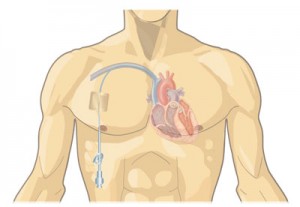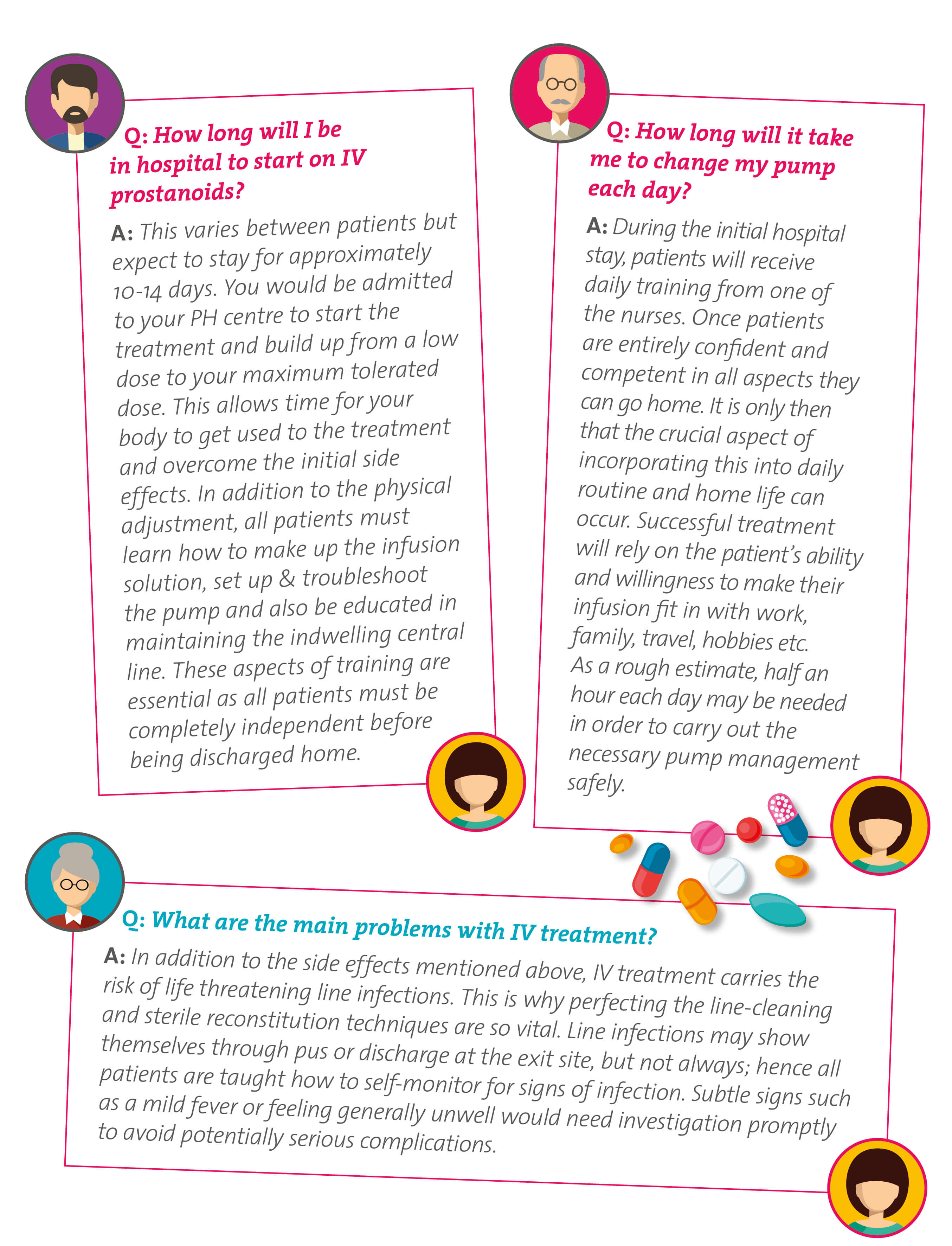Prostanoids are powerful vasodilators (open up blood vessels) which allow more blood to flow through the narrowed vessels in the lungs. This family of drugs work in a similar way to naturally occurring substances called prostaglandins produced by the body, albeit in much smaller quantities. Over time, by opening up narrowed vessels, strain on the heart is reduced. Successful treatment can result in significant shrinking and remodelling of the heart, helping it to work more efficiently again. In the UK, some centres use epoprostenol and some use iloprost. There are no clinical trials to suggest one is preferable to the other.
There are three types of prostanoids currently used to treat PH:
Intravenous Prostanoids are infused directly and continuously into a large blood vessel via a permanent catheter (a thin, flexible tube that is inserted into a vein). This catheter is called a Hickman line or a Groshong line. Prostanoids need to be infused continuously 24 hours a day because the body quickly breaks them down. You will need to carry your pump with you so it can drip the medicine through an indwelling central line into your body.
Do not take intravenous prostanoids if you:
• Have had an allergic reaction to prostanoids in the past.
• Have conditions where the sideeffects of prostanoids may increase your risk of a bleed (e.g. active stomach ulcers, trauma, bleeding in your head).
• Severe coronary heart disease or unstable angina.
• Myocardial infarction within the last six months.
• Unsupervised heart failure (all PH patients will be supervised by their centre).
• Severe abnormal heart rhythms.
• Cerebrovascular events (e.g. transient ischaemic attack, stroke) within the last three months.
• Develop fluid in the lungs as a result of PH secondary to left heart disease.
Prostanoids cause a range of side effects. These include hypotension (low blood pressure), nausea, vomiting, diarrhoea, headache, flushing and jaw & foot and pain. Many of these are dependent on your dose, so treatment is commenced and then slowly increased during a hospital stay.
Prostanoids are regarded as the most potent form of PH treatment. Unfortunately by infusing high doses continuously the whole-body (sometimes referred to as systemic) side effects can be significant.
Epoprostenol is given intravenously (injected directly into a vein) via a permanent catheter (a thin, flexible tube that is inserted into a vein). This catheter is called a Hickman line or a Groshong line.

Prostanoids are continuously pumped into the body by a portable pump. It must be given this way because the medicine only lasts for a few minutes in the bloodstream. The pump attaches to the Hickman line via a thin plastic tube. The pump is worn attached to a belt around the waist or carried in a small shoulder pack. Smaller children usually use a secure backpack.
In the video below, PHA UK member Rinku Puri chats to PHA UK chair Iain Armstrong about how she made the decision to start intravenous (IV) treatment for pulmonary hypertension and what life has been like since.
You can also read a transcript of the video here
